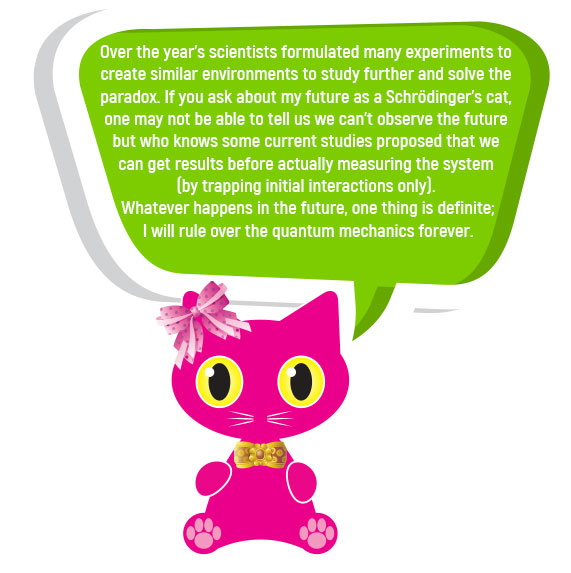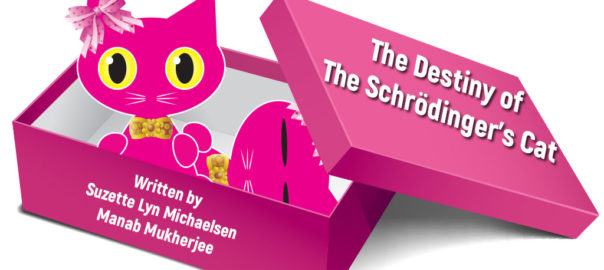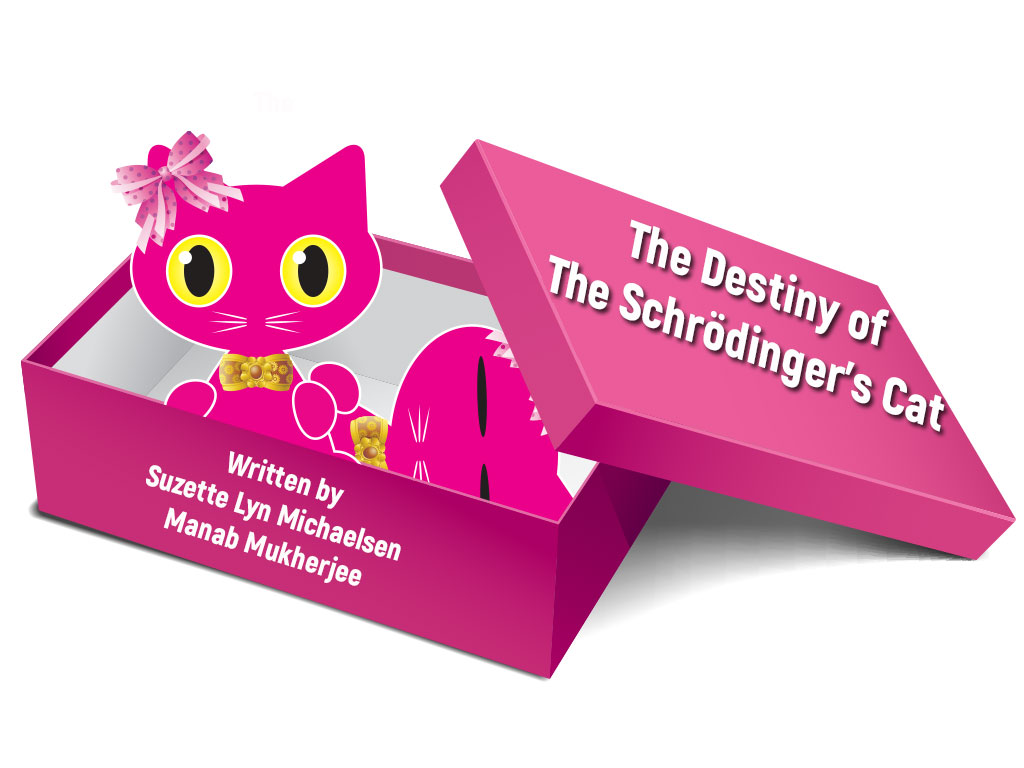
For starters, it’s a thought experiment (like those crazy ideas you think at night, it’s the same but a documented one).
It came into Schrödinger’s mind while thinking about another thought experiment of Einstein, Podolsky, and Rosen (again similar to how you think about crazy ideas of your friends). The EPR experiment shows that a system with multiple particles separated by large distances can be in such a superposition.
Schrödinger and Einstein exchanged letters about Einstein’s EPR article, in the course of which Einstein pointed out that the state of an unstable keg of gunpowder will, after a while, contain a superposition of both exploded and unexploded states.
To further illustrate, Schrödinger described how one could, in principle, create a superposition in a large-scale system by making it dependent on a quantum particle that was in a superposition. He proposed a scenario with a cat in a locked steel chamber, wherein the cat’s life or death depended on the state of a radioactive atom, whether it had decayed and emitted radiation or not. According to Schrödinger, the Copenhagen interpretation implies that the cat remains both alive and dead until the state has been observed. Schrödinger did not wish to promote the idea of dead-and-live cats as a serious possibility; on the contrary, he intended the example to illustrate the absurdity of the existing view of quantum mechanics.
Crazy ideas like this created mass hysteria among people that Quantum Mechanics is for nutty people. Even the slight possibility of killing a hypothetical cat can induce fear among cat lovers all over the world. Of course, Schrödinger was an atheist and a soldier for years. People like us will not think something like it.
In case the cat dies, we will be haunted for the rest of our lives and cat ghosts are the worst (we don’t know about ghosts completely, if they are, they are not real, till now physics hasn’t given out the complete idea of reality).
Also, it’s hard to do this experiment with a hypothetical cat. People who know cats already know that your cat owns you not otherwise. So, keeping it in a box for long without any meow or shaking (which will perish the motive of the experiment) is even far from the reality we are trying to explain.
Anyways this experiment triggers certain questions in our mind such as
• Why did he use cats, not other animals or humans (generally bunnies are testing animals)?
• Is reality dependent/independent/mixed (from measurement) (Concern of Einstein)
• Are we (observers) even real and independent? (Who will measure that?)
• What is reality?
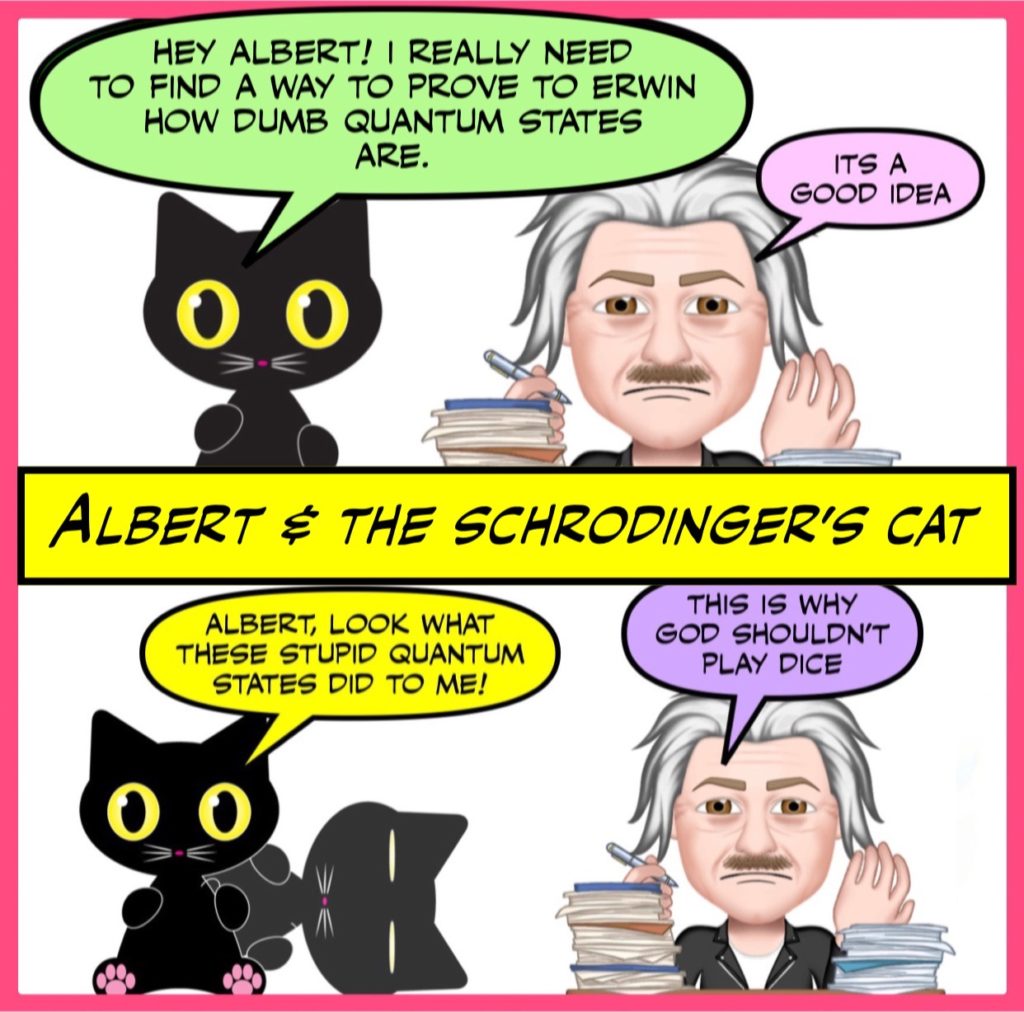
The “Brain in a vat” hypothesis is cast in scientific terms. It supposes that one might be a disembodied brain kept alive in a vat, and fed false sensory signals, by a mad scientist. This is a premise of the film series, Matrix hypothesis.
• If one person sees the cat in one state and tells/not tell his friends about it what will they be the same or different? (in case they don’t know about each other observation) (Wigner’s friend paradox)
• What is the source of this confusion, the cat / radioactive atom /observer? Can they be treated as different or have relations between them and all can be described by similar wave functions?
• Can we measure anything or just change anything?
• What will be the time in case of measurement?
J. W. Dunne proposed an infinite hierarchy of time dimensions, inhabited by a similar hierarchy of levels of consciousness. Dunne suggested that in the context of a “block” spacetime as modelled by General Relativity, the second dimension of time was needed to measure the speed of one’s progress along one’s timeline. This in turn required a level of the conscious self-existing at the second level of time. But the same arguments then applied to this new level, requiring a third level, and so on in an infinite regress. At the end of the regress was a “superlative general observer” who existed in eternity.
Speculative theories with more than one-time dimensions have been explored in physics. The additional dimensions may be similar to conventional time, compactified like the additional spatial dimensions in string theory or components of a complex time.
Based on the special orthogonal group SO(10,2), representing the GUT spin group of the extended supersymmetry structure of M-theory, a “two-time physics” has been suggested.
In F-theory the possibility of one or two compactified additional time dimensions is not ruled out.
The existence of a well-posed initial value problem for the ultra-hyperbolic equation (a wave equation in more than one-time dimension) demonstrates that initial data on a mixed (spacelike and timelike) hypersurface, obeying a particular nonlocal constraint, evolves deterministically in the remaining time dimension.
Some of the questions have been partially/fully explained since the introduction of this experiment.
Realism and locality in physics
Local realism is a significant feature of classical mechanics, general relativity, and electrodynamics; but quantum mechanics has shown that quantum entanglement is possible. This was rejected by Einstein, who proposed the EPR paradox, but it was subsequently quantified by Bell’s inequalities. If Bell’s inequalities are violated, either local realism or counterfactual definiteness must be incorrect; but some physicists dispute that experiments have demonstrated Bell’s violations because the sub-class of inhomogeneous Bell inequalities has not been tested or due to experimental limitations in the tests. Different interpretations of quantum mechanics violate different parts of local realism and/or counterfactual definiteness.
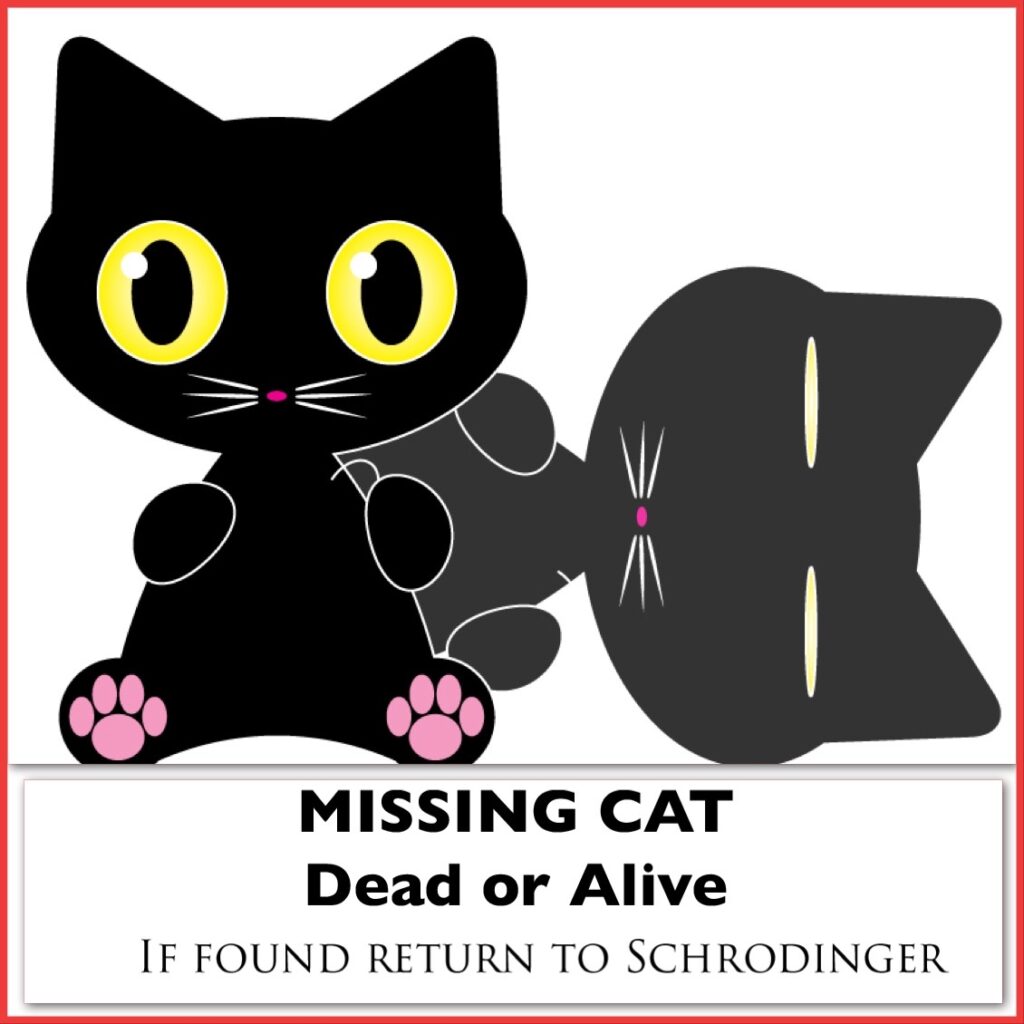
Different Interpretations of the experiment
❖ Copenhagen interpretation
A commonly held interpretation of quantum mechanics is the Copenhagen interpretation. In the Copenhagen interpretation, a system stops being a superposition of states and becomes either one or the other when an observation takes place.
Analysis of an actual experiment found that measurement alone (for example by a Geiger counter) is sufficient to collapse a quantum wave function before there is any conscious observation of the measurement, although the validity of their design is disputed.
❖ Many-worlds interpretation and consistent histories In the many-worlds interpretation, both alive and dead states of the cat persist after the box is opened, but are decoherent from each other. In other words, when the box is opened, the observer and the possibly-dead cat split into an observer looking at a box with a dead cat, and an observer looking at a box with a live cat. But since the dead and alive states are decoherent, there is no effective communication or interaction between them.
❖ Ensemble interpretation
The ensemble interpretation states that superpositions are nothing but sub ensembles of a larger statistical ensemble. The state vector would not apply to individual cat experiments, but only to the statistics of many similarly prepared cat experiments. Proponents of this interpretation state that this makes the Schrödinger’s cat paradox a trivial matter, or a non-issue.
❖ Relational interpretation
The relational interpretation makes no fundamental distinction between the human experimenter, the cat, or the apparatus, or between animate and inanimate systems; all are quantum systems governed by the same rules of wavefunction evolution, and all may be considered “observers”. But the relational interpretation allows that different observers can give different accounts of the same series of events, depending on the information they have about the system. The cat can be considered an observer of the apparatus; meanwhile, the experimenter can be considered another observer of the system in the box (the cat plus the apparatus). Before the box is opened, the cat, by nature of its being alive or dead, has information about the state of the apparatus (the atom has either decayed or not decayed); but the experimenter does not have information about the state of the box contents.
❖ Transactional interpretation
In the transactional interpretation the apparatus emits an advanced wave backward in time, which combined with the wave that the source emits forward in time, forms a standing wave. The waves are seen as physically real, and the apparatus is considered an “observer”. The cat is never in superposition. Rather the cat is only in one state at any particular time, regardless of when the human experimenter looks in the box. The transactional interpretation resolves this quantum paradox.
❖ Zeno effects
The Zeno effect is known to cause delays to any changes from the initial state.
On the other hand, the anti-Zeno effect accelerates the changes. For example, if you peek a look into the cat box frequently you may either cause delays to the fateful choice or, conversely, accelerate it. Both the Zeno effect and the anti-Zeno effect are real and known to happen to real atoms. The quantum system being measured must be strongly coupled to the surrounding environment (in this case to the apparatus, the experiment room … etc.) in order to obtain more accurate information. But while there is no information passed to the outside world, it is considered to be a quasi-measurement, but as soon as the information about the cat’s well-being is passed on to the outside world (by peeking into the box) quasi-measurement turns into measurement. Quasi-measurements, like measurements, cause the Zeno effects
❖ Objective collapse theories
According to objective collapse theories, superpositions are destroyed spontaneously (irrespective of external observation), when some objective physical threshold (of time, mass, temperature, irreversibility, etc.) is reached. Thus, the cat would be expected to have settled into a definite state long before the box is opened. This could loosely be phrased as “the cat observes itself”, or “the environment observes the cat”.
